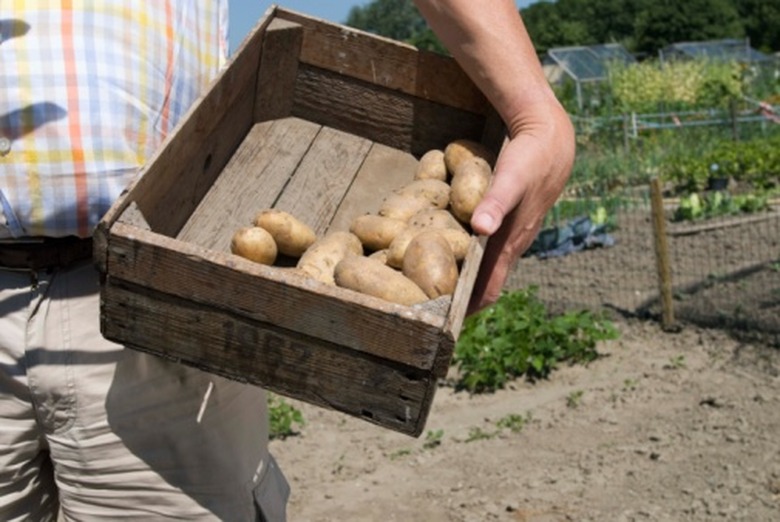What Does It Mean When A Potato Plant Flowers?
In Maine, the thousands of acres of potato blossoms in the summer are a beautiful sight. In shades of lavender and white, they can make an entire field look like a soft pastel blanket, and the potato farmers are delighted because they know that a potato plant that blossoms is on its way to producing potatoes.
In Maine, the thousands of acres of potato blossoms in the summer are a beautiful sight. In shades of lavender and white, they can make an entire field look like a soft pastel blanket, and the potato farmers are delighted because they know that a potato plant that blossoms is on its way to producing potatoes.
Potato Blossoms
Potatoes are in the nightshade family, along with eggplant, tobacco, belladonna, tomatoes and petunias, and they all get blossoms. Bees come along, looking for some nectar to take back to the nest and as they get their nectar, they pollinate the plant. Watching the growth of a tomato plant is a perfect example; the plant flowers, a bee or two pollinate it, and the blossom falls away from where the tomato will grow. Potato blossoms also sometimes create a fruit where the blossom was, but it is filled with tiny seeds and is poisonous.
What Goes on Under the Ground
After the blossoms have been pollinated, the roots underground begin to grow tiny potatoes along the roots. These grow quickly, and grow even faster once the plant begins to die — and potato farmers hasten this by spraying the tops of the plants to kill them. Once the tops are dead, the potatoes continue to develop until harvest.
- In Maine, the thousands of acres of potato blossoms in the summer are a beautiful sight.
- In shades of lavender and white, they can make an entire field look like a soft pastel blanket, and the potato farmers are delighted because they know that a potato plant that blossoms is on its way to producing potatoes.
What Can Go Wrong?
Potatoes have natural enemies that can wipe out an entire crop. Blight, beetles and the larvae of beetles can damage the potatoes or wipe them out.
Interesting Facts about Potatoes
During the gold rush in Alaska, miners traded potatoes for gold because of the vital vitamin C that potatoes contain. When potatoes were introduced in Europe, they thought they were poisonous, then an aphrodesiac. History places the discovery of the potato with the Peru Inca Indians in 200 BC.
Deep Do You Plant A Potato?
Seed potatoes should be planted 3 to 4 inches deep in the soil. Once the potato seedlings sprout and grow, they need mounding. Without mounding, the cluster of potatoes growing under the soil can surface and grow right out of the soil. Potatoes initially need a dark spot to grow, but that doesn't limit you from growing potatoes only in the garden soil. After preparing the garden bed, simply lay the seed potatoes on top of the soil and add a 4-inch layer of straw over the whole bed. The grow bags can sit on a porch, patio or any sunny spot outdoors. To start with, the bags are filled one-third to a half full of soil. The seed potatoes are planted 3 to 4 inches deep and allowed to sprout. As they grow, more soil is added to the bag to prevent the developing tubers from surfacing. And at harvest time, all you have to do is empty the bag and sort out the potatoes.
- Potatoes have natural enemies that can wipe out an entire crop.
- Without mounding, the cluster of potatoes growing under the soil can surface and grow right out of the soil.
